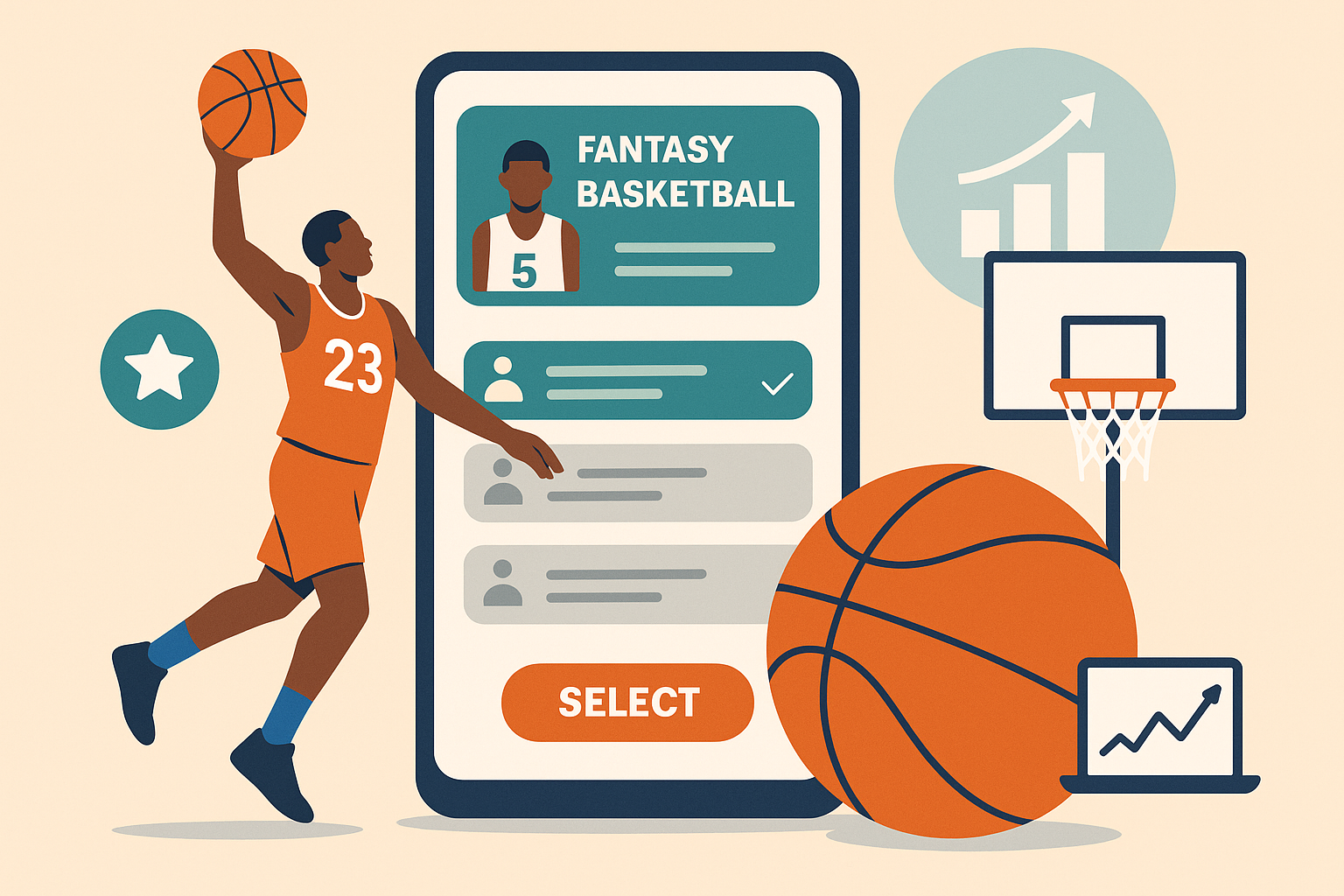
It’s 2025, and fantasy sports apps have evolved into vibrant ecosystems where fans can truly immerse themselves in their sports fantasies. So, what keeps users engaged, constantly building teams and checking scores multiple times a day? The secret is in the UX/UI. Nowadays, a fantasy sports app needs to offer more than just stats and leaderboards; it has to create the right vibe. It should be smooth, thrilling, and feel personal.
Let’s take a closer look at the hottest UX/UI trends that are influencing fantasy sports apps this year.
Why UX/UI Design Matters in Fantasy Sports Apps
The Impact on User Retention and Engagement
Let’s face it, users can spend hours fine-tuning their lineups, diving into insights, and joining leagues. If the app feels clunky or confusing, they’re out of there. A sleek interface with intuitive navigation doesn’t just look appealing; it fosters trust and keeps users engaged.
Apps that nail intuitive design make using them feel effortless. Everything just clicks into place. You tap, swipe, and suddenly, you’re running your fantasy team like a seasoned pro.
Converting Casual Users into Power Users
Creating a fantastic user experience goes beyond just keeping people around; it’s really about driving conversions. When a new user opens a fantasy app and can quickly figure out where to go, what actions to take, and how to succeed, they’re much more likely to stick around and become a loyal, paying customer.
And that’s where the magic of UI polish comes into play, think clear onboarding, easily accessible tools, and those gentle nudges that help transform a curious newcomer into a full-blown fantasy league enthusiast.
Key UX/UI Trends Dominating Fantasy Sports Apps in 2025
Hyper-Personalized User Interfaces
2025 is all about making things personal. Now, apps come with dashboards that adapt to your behavior, preferences, and favorite teams. Whether you're a fan of fantasy football, basketball, or cricket, the app welcomes you with the content that matters most to you.
When it comes to color themes and stat layouts, everything is designed to help users feel completely at home.
AI-Powered Predictive Design
AI has evolved beyond just making recommendations. Now, it’s driving real-time predictive interfaces that adjust on the fly. Take fantasy sports, for instance: if one of your players gets hurt, the interface can quickly suggest bench options or even tweak your strategy right then and there.
It’s clever, and proactive, and gives users the feeling that they’re always a step ahead.
Immersive micro-interactions and Animations
It's the little things that make a huge impact. Those subtle vibrations when you draft a player, the animations that pop up when your team scores, these micro-interactions breathe life into fantasy apps, transforming simple actions into delightful moments.
These design elements enhance the emotional connection, helping users feel more engaged and part of the experience.
Dark Mode and Eye-Friendly Visual Themes
Hey night owls, it's time to celebrate! Dark mode has officially gone from being a nice-to-have to a must-have. With those gentle contrast themes, you can scroll for hours on end without feeling that dreaded screen fatigue.
With countless users staying up late to check scores and lineups, it looks like this trend is here to stay for a while!
Gesture-Based Navigation & One-Handed Use
With mobile devices taking center stage, apps are moving away from cluttered buttons and embracing intuitive gestures. Just swipe to switch players or tap to join leagues, no need for any complicated two-handed maneuvers!
User experience (UX) is now crafted with the on-the-go user in mind, think about those folks juggling team management while riding the subway, at work, or even during halftime.
Cross-Platform Consistency for Multi-Device Use
Users are constantly switching between their phones, tablets, and even smart TVs these days. So, a modern fantasy app needs to deliver a consistent experience no matter where you are. Whether you're on Android, iOS, or using a desktop, having that uniformity makes everything feel seamless.
Voice & Chatbot Integrations for Seamless Interaction
“Hey app, who should I bench this week?” Voice integration is taking off. Nowadays, some apps come equipped with chatbot assistants that help users make quick decisions on the go.
These tools make it easier for newcomers to get started and provide fast assistance whenever it's required.
The Role of Gamification in Enhancing UX
Reward Systems & Progression Design
People enjoy earning rewards. Whether it’s snagging a badge for your first victory or leveling up to become a “fantasy veteran,” gamification keeps us engaged and coming back for more.
Leaderboards, Trophies, and Real-Time Stats
Leaderboards have evolved beyond being just static displays. Nowadays, they refresh in real-time, showcase the best performances, and even grant bragging rights with digital trophies. It’s a blend of competition and social media, and users are absolutely loving the spotlight it brings!
Mobile-First Design Strategy in 2025
Thumb-Zone Optimization
Designers are considering your thumbs these days. The best apps are now placing important actions right where your fingers naturally fall, so you won’t have to stretch to reach those pesky top corners of your screen anymore.
This “thumb-first” design approach enhances navigation, making it feel smoother and more intuitive.
Fast Load Times & Lightweight UI Elements
Speed is crucial. Sure, fancy designs can be eye-catching, but they don’t mean a thing if the app is slow. That’s why developers are turning to lightweight UI frameworks to ensure everything runs smoothly, even when there’s a surge in traffic during Sunday game days.
Accessibility and Inclusive Design Trends
Color Contrast, Font Adjustments, and Haptic Feedback
Accessibility is finally getting the spotlight it truly deserves! With customizable font sizes, high-contrast color themes, and tactile feedback, this app is designed to be inclusive for everyone, especially those with visual impairments.
Designing for Visually and Hearing-Impaired Users
Inclusive design is set to take a big leap in 2025. Imagine having closed captioning for videos, text alternatives for audio cues, and robust support for screen readers. Making fantasy sports accessible to everyone isn’t just a nice idea; it’s necessary.
Future Outlook: What’s Next for UX/UI in Fantasy Sports?
Integration with Augmented Reality (AR)
Imagine pointing your phone at your living room and watching your dream fantasy lineup come to life in 3D. Augmented reality is starting to make waves in the world of fantasy sports, offering exciting new ways to engage with your team and all the stats that come with it.
It’s early, but it’s coming.
Predictive UX with Machine Learning
Machine learning is revolutionizing the way apps understand what users want, often before they even have to ask. Whether it’s offering smart lineup suggestions or sending in-app alerts based on player trends, the focus is all about predicting needs and responding quickly.
Final Thoughts on UX/UI Evolution in Fantasy Sports Apps
Fantasy sports apps are picking up speed these days, and it’s about so much more than just eye-catching graphics. The top apps in 2025 are designed to be smart, user-friendly, inclusive, and incredibly personal. They blend thoughtful design with the latest technology to keep users engaged, thrilled, and eager to return for more.
Whether you're part of a Fantasy Football App Development Company or simply a passionate fan, staying on top of the latest trends is essential. One up-and-coming brand making waves is Fansportiz, which skillfully combines innovation and user-friendliness to transform the way people engage with fantasy sports.
As we head deeper into 2025, one thing is crystal clear: the game isn't just played on the field anymore; it's right in the palm of your hand.



Write a comment ...